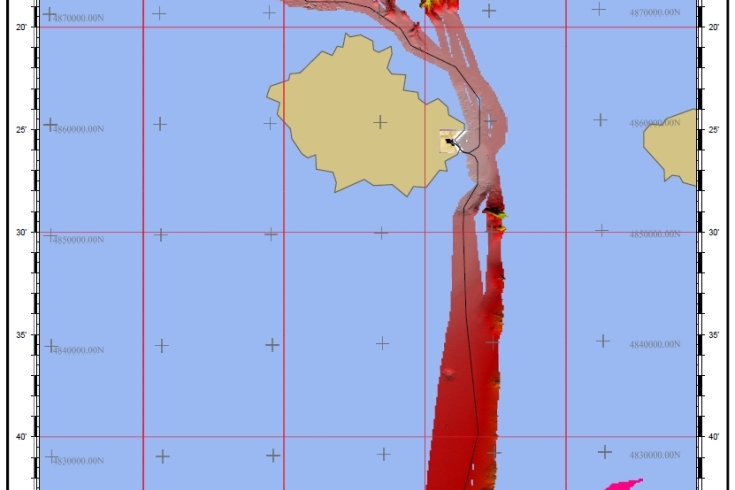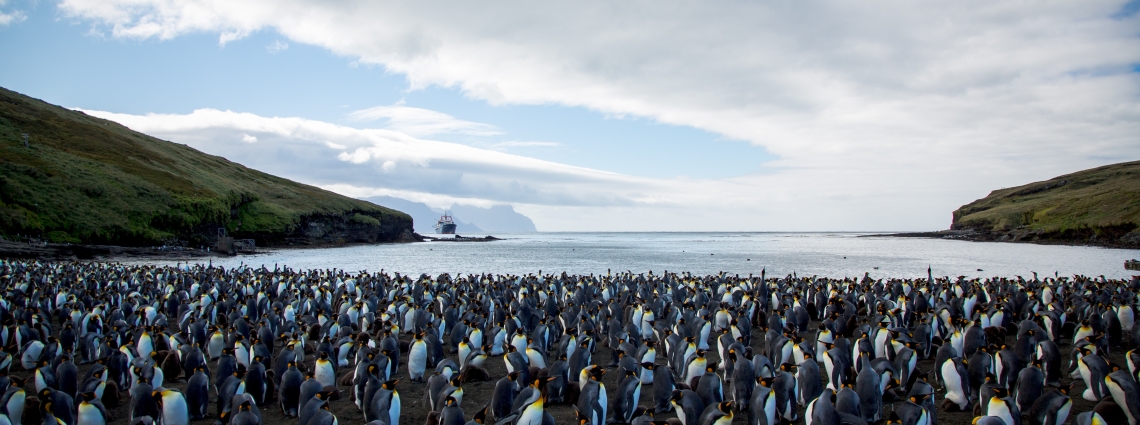Crozet Islands: installing our last hydroacoustic station
In February 2016, Jerry Stanley and Mario Zampolli, hydroacoustic experts from the Comprehensive Nuclear-Test-Ban Treaty Organization (CTBTO), went on a mission to add another important role for the archipelago; the installation of the CTBTO’s last hydroacoustic station, HA04.

The Crozet Islands are home to thousands of king penguins. Click to enlarge.
The IMS also monitors the Earth’s crust and atmosphere: 170 seismic stations monitor the ground for shockwaves, 60 infrasound stations listen for atmospheric waves, while 80 radionuclide stations sniff the air for traces of radioactivity – see interactive map.

The hydrophones float in a channel where sounds travels very efficiently. This channel varies in depth around the world's oceans, but is typical found at a depth of several hundred meters at Crozet.
The Crozet Islands are the ideal observation point from the acoustic point of view. If you place receivers there you can hear sounds from the Southern Atlantic all the way to the Indian Ocean. It is just like being in the perfect spot - the perfect lookout.
The station will use six hydrophones (underwater microphones) to monitor underwater sounds deep in the ocean. The HA04 hydrophones send their data via underwater cables, which are tens of kilometres long, to a receiving facility, the Central Recording Facility (CRF), on the island. From there the data is forwarded via satellite to the CTBTO in Vienna.
With no airstrip available on, or anywhere near, the Crozet Islands the HA04 installation team and its equipment was transported to the island on the Marion Dufresne II, a French oceanographic research and deep water survey vessel - a roundtrip journey of over 5,000 kilometres.
The experts’ first task was to install the upgraded CRF on the archipelago’s main island, Possession Island (Île de la Possession). The CRF includes communication equipment and equipment for processing the hydrophones' data. Within a few days of arrival of the team all the equipment was shipped to the island, installed and the dedicated satellite data connection to Vienna commissioned and tested.

The Marion Dufresne II, one of the world’s biggest and most sophisticated oceanographic research and deep water survey vessels, supported the mission. It is specifically designed to withstand the extremely rough weather conditions, which are often found around the Crozet Islands.
We have been installing with our contractor this hydroacoustic laboratory. It is ready to receive data from the underwater system. That comes into two computers where the data from the north and south underwater triplets is formatted and mixed with time stamps from GPS. This is then transferred to CTBTO computers which, via satellite link, forward everything in real time to Vienna.

Possible north and south cable routes (black lines) superimposed upon the bathymetric survey data.
We will have cables going out north of the island 40 to 50 kilometres to where we are going to install the hydrophones. These cables will be there for over 20 years. We need to understand the seabed profile to put the cables in places where the risk of abrasion or damage by the seafloor is minimized.
Once completely established, hydroacoustic station HA04 can help monitor, and thus protect, the local fauna. For example, hydroacoustic data can be used to track the migration of whales. Find here an example of a whale song recorded by a CTBTO hydroacoustic station.


The monitoring system that is put in place by CTBTO isn’t just applicable to the detection of nuclear testing. We have a lot of whales in the sub Antarctic region and the hydrophones will provide valuable materials that enable us to perform long term studies. The hydrophones also pick up seismic movements and, for tsunami alerts, the CTBTO network supplies a lot of information as well.
18 Apr 2016
